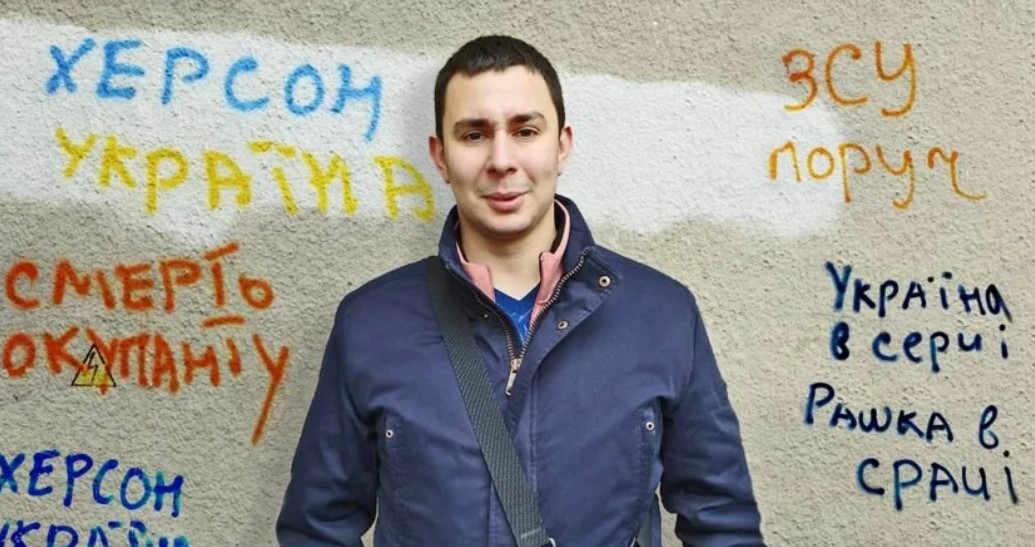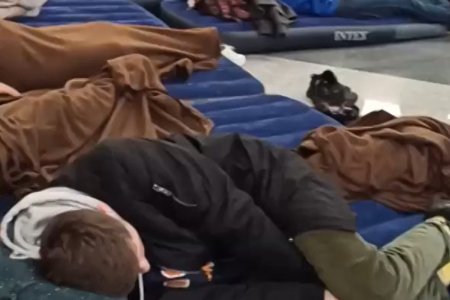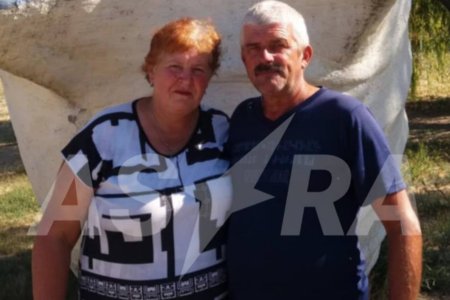
Andriy Andriushchenko spent 47 days imprisoned and tortured by the Russians for graffiti. Not just any graffiti, it must be said, but words and symbols that enraged the Russian invaders, as their appearance every morning defiantly demonstrated that Kherson remained a Ukrainian city.
Kherson was under Russian occupation for over nine months, with the invaders swiftly unleashing open terror against the population. Andriushchenko had decided from the outset that he would not leave. He explains that when, for example, the security services leave, you know that they have coordinated their actions with the military command and are probably engaged in some kind of tactical moves. When civilians leave the city to the invaders, it is the latter’s victory. “Because this is our land, and they force people to abandon their city, their homes…”
Andriushchenko had joined the ‘Municipal Guard’ in the first days of occupation. The initial plan was to assist the Territorial Defence in opposing the enemy, however the speed with which the heavily armed Russians overran the city made that impossible. Instead, the volunteers were involved in countering looting, organizing protest rallies and preventing provocation during them. The protests were entirely peaceful, but that did not stop the Russians using violence to disperse them, as well as abductions, torture and killings of civilians. In Kherson alone, the Russians imprisoned civilians in at least four places, with three of these also used as effective torture chambers.
Protests and resistance became very dangerous, with strict secrecy and methods of conspiracy needed. Andriushchenko became known later by the code name ‘Artist’ because of the specific form of protest he and his friends chose. He explains that their resistance began after the Russians removed one Ukrainian flag over the City Council. They decided that they would replace this one flag by thousands of blue and yellow flags. Very early each morning, before the end of the invaders’ curfew, they would go out into the streets and paint signs on fences, lampposts and buildings such as “Kherson is Ukraine”; “the Ukrainian Armed Forces are nearby” and ‘Glory to Ukraine!”. There would be a few of them, with several young women keeping watch while they painted their signs. They would try, as much as possible, to avoid being seen by passers-by, however this was not always possible. Andriushchenko recalls, however, that “some were very happy, but pleaded with us to look after ourselves and were worried for us. Others really wanted to take photos with us as a memento or invited us in for a cup of tea”, He adds that nobody condemned them, at very least for what in peacetime might be considered an act of sabotage. “On the contrary, everybody supported us.”
The graffiti they left were a clear message to Kherson residents that Russia had not crushed all resistance and that they should also remain firm. Since they reacted swiftly to every new event, like the explosion and ensuring damage caused to Russia’s illegal Crimea bridge, bucking the invaders’ efforts to create an information vacuum on occupied territory. The graffiti also sent warnings to both the invaders and local collaborators, with messages like “A good orc is a dead orc”; “Death to the occupiers”, etc. Andriushchenko told Suspilne that this drove the invaders crazy, as, indeed, was their aim. They were helped by representatives of the Kherson authorities, such as Deputy Head of the Kherson Military Administration, Yury Sobolevsky. The latter increased circulation of their patriotic messages and also provided advice and assistance in escaping capture.
He assumes that somebody betrayed them for their pro-Ukrainian position, as they were all seized by the Russians. In his case, he was detained purely for his position, with the Russians only understanding who he was during interrogation, when they managed to reinstate photos previously deleted from his phone which showed the messages he had painted. They were pleased to have caught a person who had become a thorn in their side, he says, adding that he assumed he would not be released. The Russians even came up with ‘charges’ under Russian legislation, accusing him of ‘calls to extremism’, with these potentially leading to huge prison sentences.
His ordeal lasted for 47 days from 4 August, with he and eleven of his friends held in the temporary holding centre in Kherson which the invaders used as one of their prisons and torture chambers. They kept moving Andriushchenko to other cells, making it possible for him to meet people seized from Municipal Guard as well as “real heroes who tried to actively oppose the new regime” (by taking part in acts of sabotage, for example). He says that some of these heroes have not been released, and there is no information as to their whereabouts.
During most of the days in captivity, he was subjected to differing forms of physical torture – beatings, electric currents (through wires attached to sensitive parts of the body) and teeth knocked out. They tried to force him to inform on other members of the resistance which he refused to do. He notes that since the graffiti continued to appear, it was clear that the invaders understood that they gained nothing by keeping him imprisoned, yet continued to do so. He was released, he says, after a new ‘investigator’ appeared on the scene who had evidently not bothered to read the previous records about why Andriushchenko and his friends had been seized.
Following his release, and until the liberation of Kherson on 11 November, he was active “on the information front”, but could no longer go out painting graffiti, given the likelihood of being under surveillance and caught again. Since liberation, he has been involved in helping to resolve humanitarian issues.
The activities which Andriushchenko and his friends were engaged in preceded the emergence of the ‘Yellow Ribbon’ movement, with the latter now continuing similar forms of resistance on all areas temporarily under Russian occupation.



